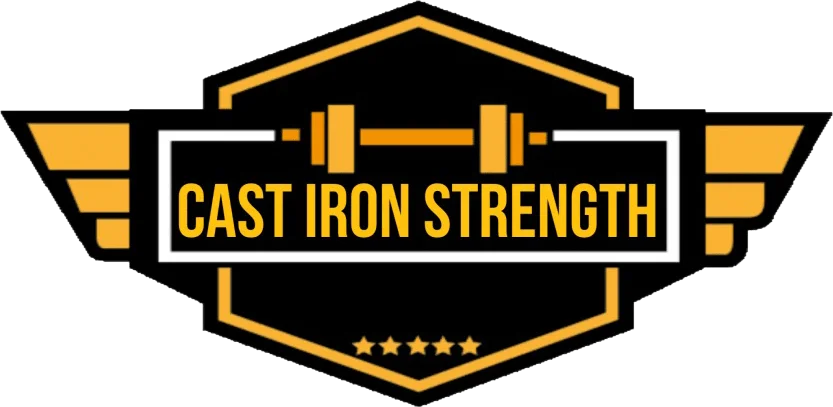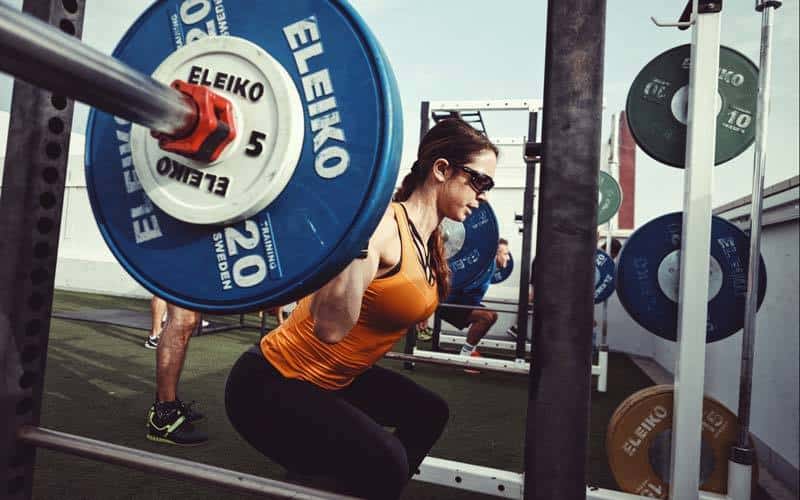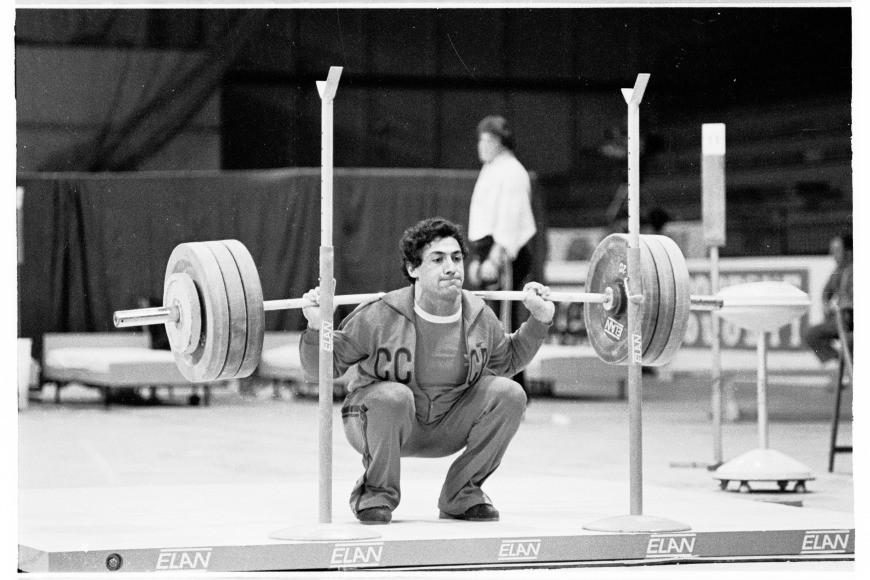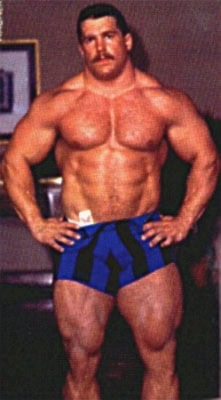The Following is an exert from the squat chapter of my upcoming powerlifting book. The text is becoming something of a behemouth so would expect it’s release to be closer to the middle/end of 2018
There are many different variations of the pause squat somewhere the lifter can pause in 2 or more places during the lift. The pause squat is typically thought to be a strengthening exercise for example when the lifter pauses at the bottom position for 1-2 seconds it is commonly thought to strengthen up the bottom position of the squat. However, there isn’t really a mechanism that you can point to where training an isometric contraction can really carry over into the squat movement.
The stretch-shortening cycle (SSC) refers to the ‘pre-stretch’ or ‘countermovement’ action that is commonly observed during typical human movements such as jumping. This pre-stretch allows the athlete to produce more force and move quicker. – www.scienceforsport.com 2017
Some people might try and point to starting strength (the lifter’s ability to overcome the initial momentum of the bottom of the squat) however in a squat the lifter will spend minimal time in the bottom position as they will most likely utilise a bounce or a stretch-shortening cycle where they will use the stored elastic energy in the ligaments, tendons and muscles that surround the ankle, knee and hip to “bounce” out of the bottom. This utilisation of the stretch-shortening cycle or the bounce will lead to the lifter expending little muscular effort from the bottom position as it will simply be a return of elastic energy. So if the pause squat isn’t utilised to develop strength in the bottom position then why is it used and why is it included in the top 5 assistance exercises?
Pause squat is one of the best if not the best exercise variation you can utilise to help you to develop a better kinesthetic (learning through feeling or doing) awareness of your position in the squat. A lot of people when performing a normal squat don’t really take the time to feel through the movement to take a mental note of the tension in their lower back and hips or to notice where their balance is through the movement and how it changes at certain points. In short the pause squat us an amazing tool for learning how to move through the full range with the bar on your back in the same place as your competition squat. Think of it more as an opportunity to practice the movement and to feel through it rather than you are using it to try and strengthen up the squat.
Setting up and Performing the pause squat
For the pause squat your setup should be more or less identical to your competition or normal squat as it should be used to develop your position for your squat and doing it with the same set up will mean you will have better carry over.
Setting up and initiating the squat
Set the bar up the same way you would for a squat, same rack height, bar on the same place on your back, walk out and stance width/foot position should be the exact same.
Set up for the squat, in the same manner, you would for a normal squat – stand tall, fill your abdomen with air, brace hard, rock your hips back and then sit down in between your knees.
On the decent, you should be looking to take your time and feel through the positions of the squat. The main thing you should be looking to concentrate on when descending into the squat is to keep your spinal position in the same place as when you started that is to say in a neutral alignment.
You will need to increase the stretch on the hips and lower back as you get deeper into the squat to compensate for the extra flexion of the hip and lengthening of the hamstrings and glutes to stop your pelvis from tucking under.
Sitting into the hole and pausing
As you sit down you should also be looking to keep your balance centred through the foot to achieve this you might have to shift your hips forward and push your knees out as you go down into the squat. You should also be looking to keep your knees aligned out over the toes.
Through the whole downward movement, you should be taking notes on the feedback you’re getting from the feeling of tension in your joints and balance through your feet. By taking your time on the way down sitting down for a 2-3 second count you will be made much more aware of the way your body is moving. It is also very important to video as many reps and sets as you can to help you to develop a mental model of your own execution this mental model will help you to contextualize and understand the feedback you’re getting during the movement.
The next part of the pause squat is where it gets it’s name from. The reason taking your time on the way down during a pause squat is so important is because once you begin to tuck under during the squat it is pretty much impossible to correct it. The squat is what is referred to as a sequential skill (much like a golf swing or clean/snatch) a sequential skill requires each part of it’s performance to be executed correctly for the next part to be able to fall into place. If you overswing on a golf drive or pull it to the right or left on the backswing perfect or good execution becomes almost impossible. The squat is very similar, if you get your set up wrong and start to tuck under then you can’t rescue the rep. One of the best utilisations of the pause squat is to help you learn how to hold tension in the hip joint, allowing you to keep a neutral lumbar position at the bottom of the squat. This, in turn, will give you a stronger place from which to produce torque at the bottom of the lift.
When you sit into the bottom position of the squat you try and not sit at end range and rely on your skeleton, tendons and ligaments to hold you in position at the bottom this is what you might refer to as a passive pause. You should be looking to still utalise your quads, hamstrings, glutes, lower back and core to produce a more active pause as this will encourage you to remain in a good position you should look to pause just above end range this will help you to develop the co-ordination at the bottom of the lift to hold a good position and not to rely on more passive structures to hold you into place at the bottom of the lift. This, in turn, will transfer better into your competition squat.
There are no hard and fast rules for how long you should hold the bottom position for in the pause squat. The only real rule of thumb you should be trying to stick to is to remove as much of the stored elastic energy from the hips and knees as you can. This energy is known as a stretch-shortening cycle and is the mechanism relied upon in running and sprinting athletes to help them to produce huge amounts of force in such a small period of time. The pause squat should remove this stored energy by letting it dissipate to achieve this a pause lasting a minimum of 0.5 seconds would be required to allow most of the stored energy to dissipate.
A pause lasting somewhere in the region of 1-2 seconds would be preferable however to allow for more removal of stored energy. The stronger the athlete and the better the athlete is trained using paused reps then the better they will be adapted to storing elastic energy in the pause squat, this does not necessarily mean that they shouldn’t utilise pause work or that it won’t be of benefit it is only to acknowledge that the human body adapts to what it is exposed to on a regular basis. You may want to reflect this in your training by changing the nature of the pause, the position of the pause or increase the length of the pause.
Standing up out of the hole
When you stand up into the bar you should use this to develop the correct sequence to make sure you are pushing the bar up and not allowing the bar to sink your chest down. You should be utilising the muscles of your lower back and upper back to extend up hard into the barbell as your use the quads and glutes to stand up out of the bottom of the squat.
You will probably become more aware of your hips swinging backwards or away from the centre line as you rise from the bottom of the squat this is due to you needing to engage the muscles of the hips more from the bottom of the squat (glutes and hamstrings). This is due to the hips being at a stronger angle compared to the knees this shift allows the relative joint contribution shifting towards the hips.
The relative joint contribution will soon switch from hips to knees as the lifter gets out of the bottom position of the squat and then moves towards lockout and the sticking point. To smooth this transition and to stop yourself getting trapped with your hips behind the bar and placing your back in a vulnerable position by having it too close to horizontal relative to the ground you need to drive out of the bottom position with your shoulders as well as your legs.
A way of thinking of the sequence of coming out of the bottom of the pause squat could be legs – chest/shoulders – hips. If you get the timing correct then you should be in a good place to transfer from the hips towards the knees as you get towards/into the sticking point.
Sticking point and locking out.
As you rise out of the bottom hopefully keeping your chest driving up and having your shoulders and hips rising with each other relatively at the same time. You will start to feel the speed of the bar slowing down this will be when the initial momentum of you starting to stand up from the bottom of the lift begins to die out and the contribution of force moves from being biased towards your hips to being biased towards your knees. From this position, you should look to bring your hips forward so that you can better utilise your quads and knees to lock out the lift.
Programming recommendations for the pause squat
Pause squat can be used in many ways in your programme it can be used as a max effort or repetition effort lift as the fact that the barbell is in your competition stance will mean you can use it as a direct transfer lift into your competition stance, i.e. if you train pause squat reasonably regularly and you are hitting personal bests in the lift it is safe to assume you are shaping up for an increase in your maximal ability in the squat.
Generally, I would utilise the pause squat as a secondary lift and would either include it as the second squat variation in a lifters programme alternatively it can be used before the main squat work out if there are certain skill aspects you are wanting to emphasis.
For lifters who struggle to hold their back position in the squat using the pause squat in conjunction with a partial movement such as a high box, squat can be a really useful way of showing them how to better hold their position during the squat.
The pause squat should be one of the first squat specific assistance exercises you look to put into your programme it can also be done with different bars or in conjunction with chains or bands to develop specific elements of the lift the discussion of all these elements and interchanges is probably out with the scope of this article.
Frequency – the pause squat can programmed into a programming 1-3x during a weekly cycle if you are looking to include it in the programme 2-3x per week it might prove prudent to change the emphasis by adapting the pause positions or to adapt the tempo of the movement. The inclusion of pause squat should always to try and increase the performance of the full squat chasing an increase in pause squat performance over and above competition style squat will probably lead to little to no net increase in competition squat.
Volume – instead of giving out outright volumes given to the pause squat as this is a worthless conversation without an overview of the context of the whole programme we will talk about relative volume. A relative volume of 15-50% of total squat volume in a week can be dedicated to the pause squat as an exercise variation. If you wish to use larger relative volumes (30-50%) then you should look to do so in preparatory phases are when specific fitness in the competition squat isn’t the main aim. This can be used during periods of specific technical development or to try and develop the musculature of the hips in a manner that will specifically carry over into the bottom position of the squat.
Intensity – as discussed earlier the pause squat can be used to set outright personal bests and in some extreme programming cases it is possible for a lifter’s pause squat to outstrip their competition squat when they have neglected competition squat in the pursuit of a better paused squat. Intensities of 50-100%+ RM can be utilised with the pause squat but generally, intensities of 50-90% are recommended in your programming,
The positioning of the pause squat in the session – depending on how you are splitting up your training pause squat could be used as the first exercise in a squat specific session to help the lifter concentrate on position when used before competition squat. It could be used as a light or moderate squatting option if you are basing exercise selection or programming heavy, moderate and light training which we will cover in the programming section. Finally it can be placed at the end of a squat specific session to allow the lifter to get in some more volume to help with both hypertrophy and skill development after a more taxing or overload based part of the session.
Examples of Pause squat programming during the week.
Technical Development cycle – Goal positioning in the squat and balance throughout.
| Monday | Tuesday | Wednesday | Thursday | Friday | Saturday | Sunday |
| Pause Squat – 6 sets 6 @ 65% RM | Deadlift | Rest | Bench Press | Deadlift (easy) | Rest | Rest |
| Bench Press | Bench Press | Rest | 2 Pause Squat – 6 sets 4 @ 65% | Bench Press | Rest | Rest |
| Squat against bands – 8 sets 4 @ 50% | Deadlift | Rest | Bench Press | Assistance | Rest | Rest |
Heavy, Moderate and light cycling of training
| Monday | Tuesday | Wednesday | Thursday | Friday | Saturday | Sunday |
| Squat (heavy) | Rest | Deadlift (heavy) | Rest | Bench Press (Heavy) | Rest | Rest |
| Close Grip Bench Press (moderate) | Rest | Speed Bench (light) | Rest | Pause Squat (Moderate) | Rest | Rest |
| Speed pull (light) | Rest | High box SSB squat (light) | Rest | Deficit Deadlift (Moderate) | Rest | Rest |
Overload Cycle – using pause squat as supplemental volume
| Monday | Tuesday | Wednesday | Thursday | Friday | Saturday | Sunday |
| Squat Pyramid | Bench | Rest | Bench Press | Deadlift | Rest | Rest |
| Bench Press | Deadlift | Rest | Pause Squat against Chain – 6×6 @ 60% | Bench Press | Rest | Rest |
| Pause Squat – 4×4 @ 60% | Bench | Rest | Bench Press | Deadlift | Rest | Rest |
Example of some Pause Squat progression over 4 weeks
Linear Block
Week 1 – 4 sets 6 @ 65% RM
Week 2 – 4 sets 5 @ 70% RM
Week 3 – 4 sets 4 @ 75% RM
Week 4 – 5 sets 3 @ 80%RM
RPE based Block
Week 1 – Heavy set of 5 @ 9 RPE, Down sets – 80% of top weight for 2 sets of 10
Week 2 -Heavy set of 3 @ 9 RPE, Down sets – 90% of top weight for 3 sets of 5
Week 3 -Heavy set of 5 @ 9 RPE, Down sets – 85% of top weight for 2 sets of 8
Week 4 -Heavy set of 3 @ 9 RPE, Down sets – 95% of top weight for 3 sets of 3
Undulating Block
Week 1 – 6 sets 6 @ 65% RM
Week 2 – 6 sets 4 @ 75% RM
Week 3 – 5 sets 5 @ 70% RM
Week 4 – 7 sets 2 @ 80% RM
Overall the pause squat is an incredibly useful and versatile lift and one that can help a lifter to develop a much better understanding of how they should position themselves during the squat lift. How you should use it in the wider context of a powerlifting programme should be to help a lifter to develop technically first and foremost and to provide some training novelty of supplementary volume secondarily.
Marc





















